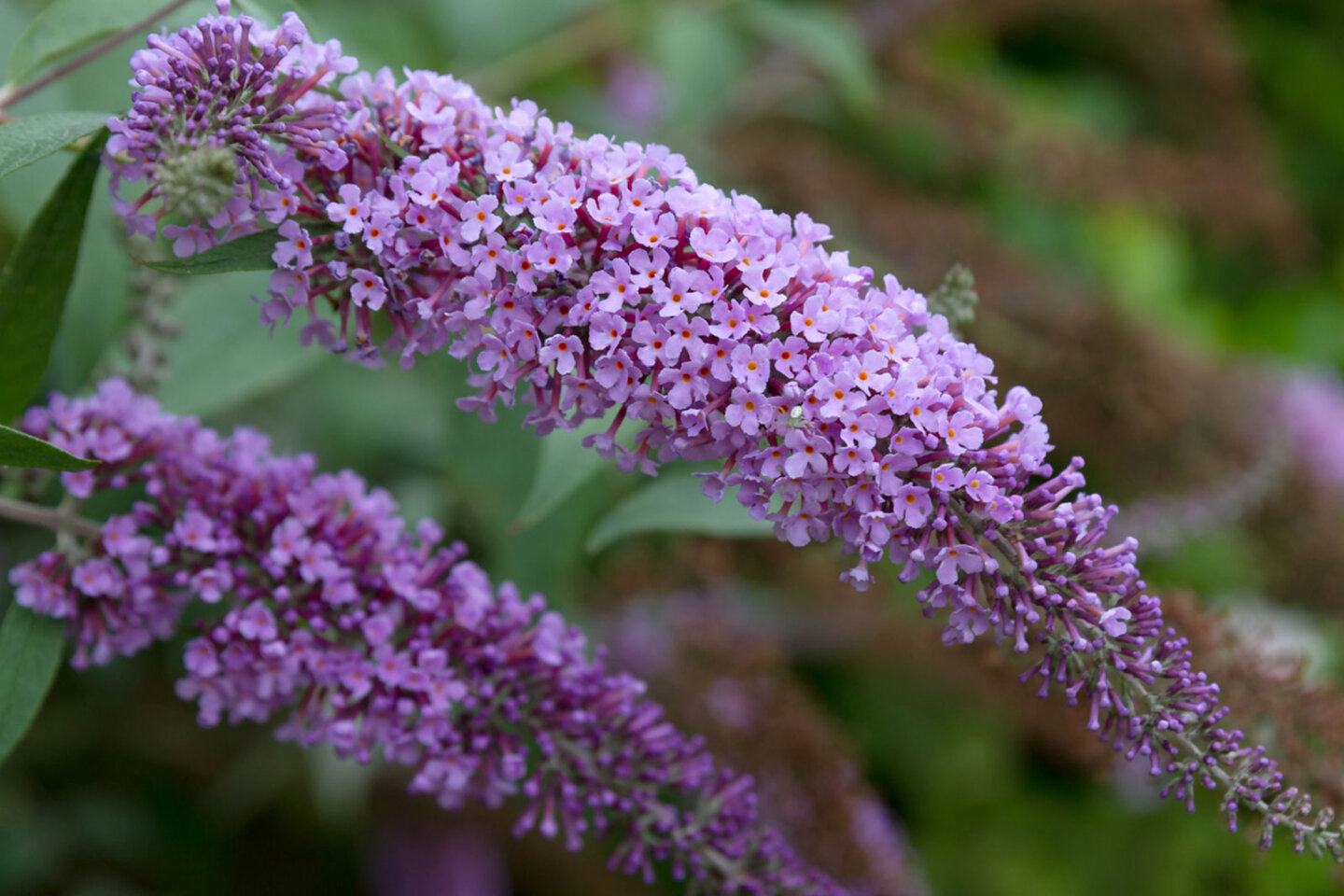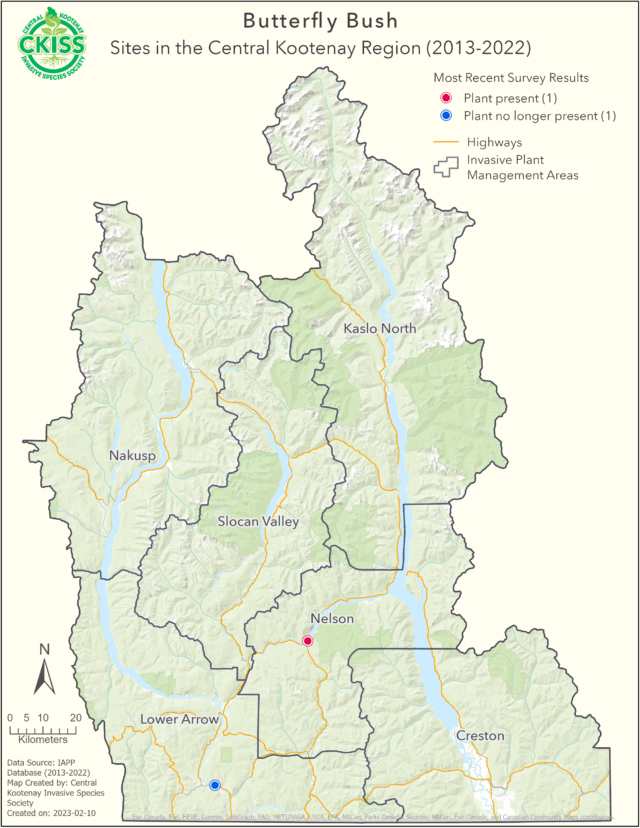Buddleja davidii
Description
- Can grow up to 5 m tall with very long, opposite, green-silver leaves
- Showy long, spiked, light-dark purple bunches of tiny flowers
- The center of each tiny flower is typically bright orange
- Young stems appear green but with maturity will develop into a grey-brown
- Establish in sunny, well-drained sites
Introduction and spread
- Native to central China
- It is a popular ornamental flower that gardeners have planted, and now it has jumped the garden fence.
- Excels at seed production and dispersal. A single flower spike can produce over 40,000 seeds
- Seeds can remain viable for up to 5 years in soil
- Cut stems can sprout again
- Very invasive on the West Coast

Photo Credit: ThurstonCo
Consequences of invasion
- Outcompetes native shrubs and plants, which are essential food sources for caterpillars.
- Can clog river systems.
- May alter soil nutrients
Status in the CKISS region
- There is currently insufficient information about butterfly bush in the CKISS region to assign it a management category on the CKISS Annual Priority List.
- There is insufficient information for this species on its distribution, impacts, potential for spread, and/or feasibility of control.
- CKISS plans on carrying out inventory as required, monitoring known locations, and/or finding out more information from other regions.
- To learn more about how CKISS classifies and manages invasive species, see our Invasive Species Priority Lists page.
Integrated pest management options
Prevention
- Be PlantWise and use the Grow Me Instead resource to avoid planting or buying butterfly bush.
- Remove flowerheads in the fall before seed dispersal.
- Dispose invasive species properly at designated disposal sites.
Mechanical
- Seeds and roots can be manually removed. Make sure to extract all the stump and roots, minimize soil disturbance, and prevent seed spread.
- Areas around the removal site should be planted with a native ground cover to prevent future seedling germination
Biological
- No biocontrol currently available in BC.
Chemical
- It may be an option and is best after cutting the trunk off at the base. Contact a professional to see if it’s right for your area.
Cultural
- Goats can be a helpful control method as they will graze on butterfly bush, however they will not completely kill the plant.


